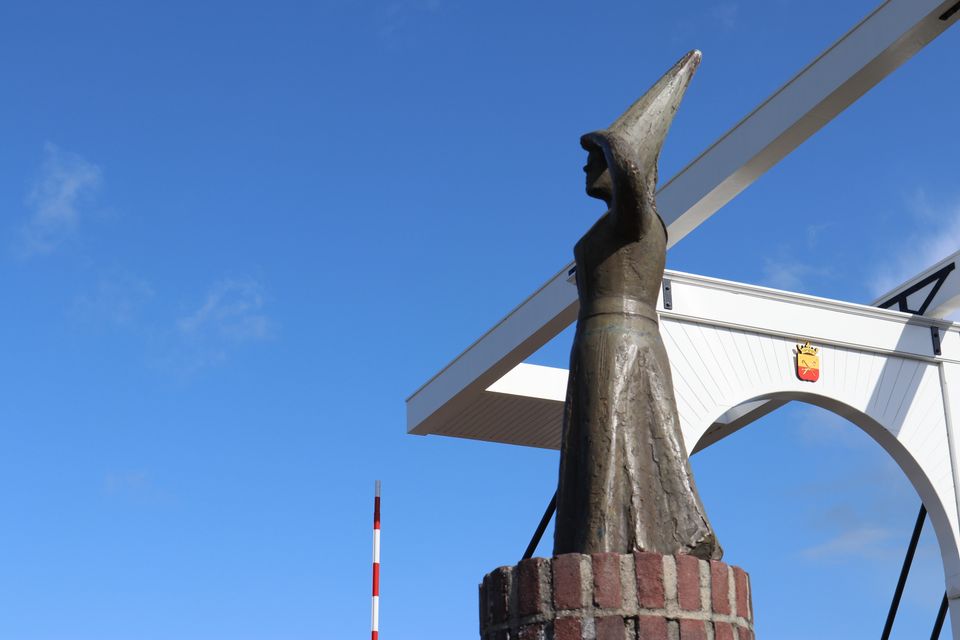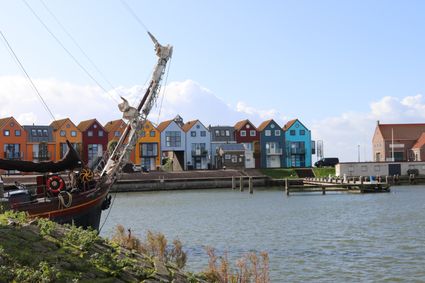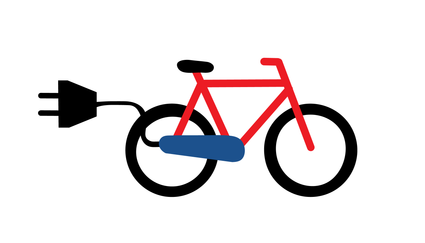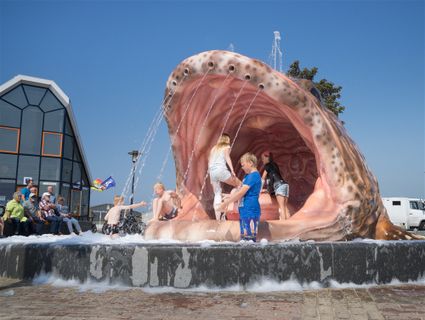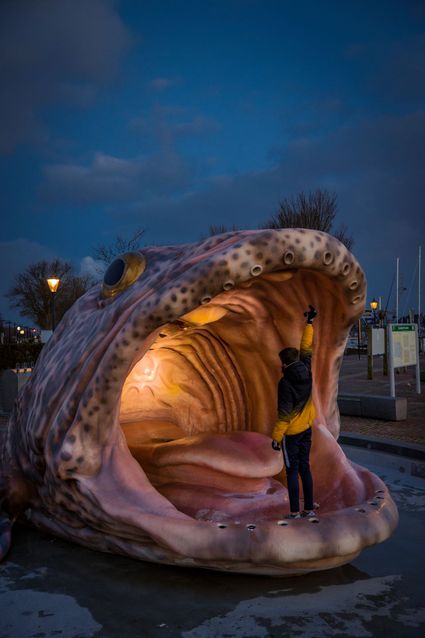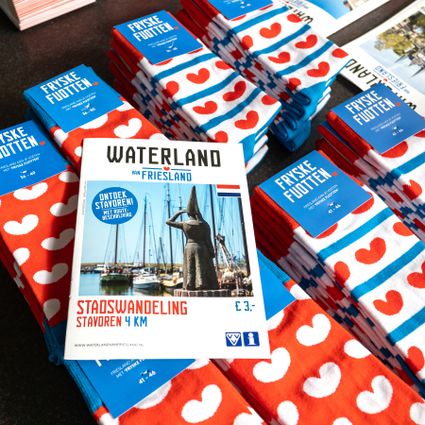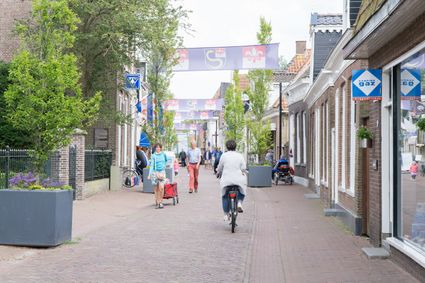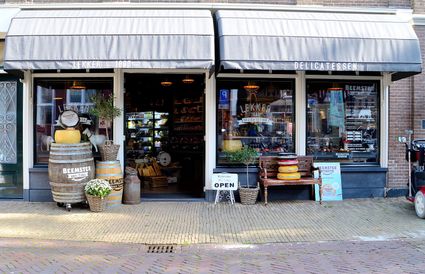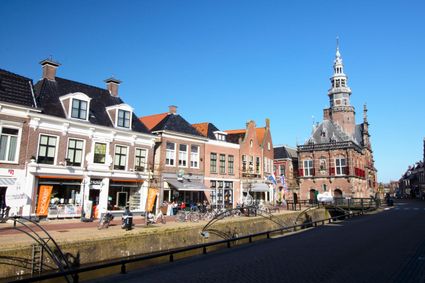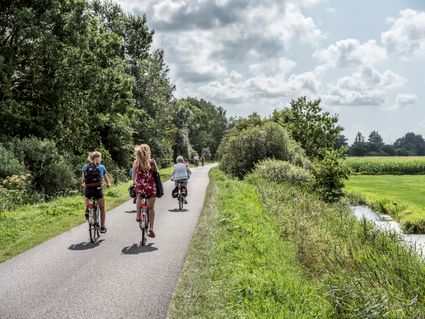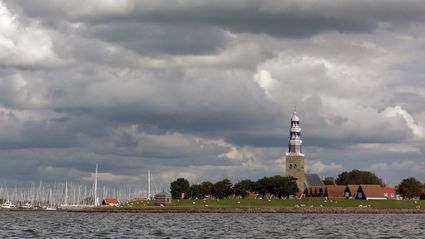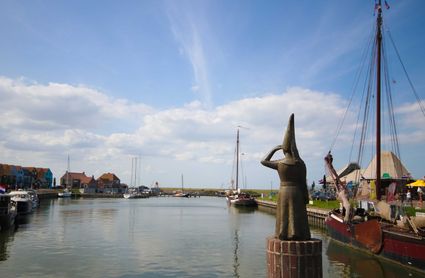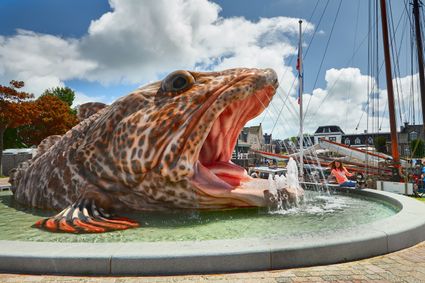The Lady of Stavoren
Stavoren
From the 15th century on, the flourishing Hanseatic city of Stavoren began to fall upon bad times. It is this period in history that is related in the saga of the Lady of Stavoren. In the saga, all aspects of Stavoren as a trading city are covered.
Take a look
You may also be interested in
-
E-bike oplaadpunt - Veerboot Stavoren - Enkhuizen
E-bike oplaadpunt - Veerboot Stavoren - Enkhuizen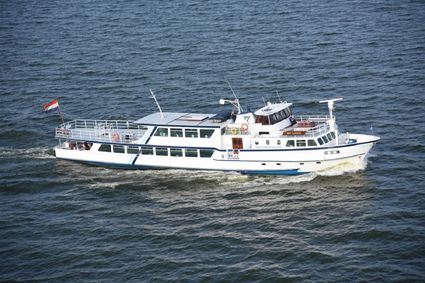
From the 15th century on, the flourishing Hanseatic city of Stavoren began to fall upon bad times. The harbour silted up, resulting in captains searching for a new home port for their ships. Economically speaking, things went downhill fast. It is this period in history that is related in the saga of the Lady of Stavoren. In the saga, all aspects of Stavoren as a trading city are covered.
The story of the Lady of Stavoren
One of the versions of the saga tells of a rich merchant's widow in Stavoren, who lived in a house with golden floors, silver walls and a ceiling embellished with sparkling jewels. She owned more ships than anyone else in the city, and became richer by the day. Despite her enormous wealth, she was not satisfied. On the contrary, she was extremely dissatisfied, and believed she could find happiness in the most costly of goods. She sent out her best captain and her largest ship to make her impossible wish come true. The ship's hold was crammed with gold.
Following a long search, the captain returned home with a cargo of grain from Danzig, which he believed to be more valuable than gold. After all, each grain of the golden wheat could be sown and could develop into a golden wheat stalk full of grains of wheat. And so this cargo could multiply itself time and again, and feed endless mouths. The haughty lady saw things completely differently however, and refused to acknowledge the grain as being the most costly good. The crowd that had gathered on the quayside agreed with her, and they all poked fun at the captain and the merchant's widow. She reacted by turning on the captain, demanding furiously: “On which side did you receive the grain?” “On the starboard side”, the captain replied cautiously. The lady snarled at him: "Then dispose of it into the sea on the port side!" An old man stepped out from the crowd and asked her not to do so. As he explained, this costly food deserved respect and should not be wasted, as it could feed many mouths.
If she were to waste it, she would become so poor that the grain would indeed appear as gold to her. She reacted by taking the gold ring from her finger and throwing it with no further hesitation far out into the sea. She added: “I have as little chance of poverty, as I have of ever seeing this gold ring again.” After everyone – including the lady – had long forgotten the old man's prediction, she was approached by one of her servants with a fish that had been caught, containing the gold ring in its stomach. From that moment on, her fate changed and disasters came upon her. And in her demise, the Lady of Stavoren took down her own city with her. Just off the coast, where the ripe wheat had been tipped into the sea, a fertile green island had arisen. Sand deposits soon collected here and a sandbank was formed. Ships could no longer easily reach Stavoren harbour, and the captains sought ports elsewhere, resulting in a complete lack of trade. And so the rich times of Stavoren were to come to an end.
- Distance to your location:
Here you will find The Lady of Stavoren
Het vrouwtje van StavorenNoord 16
8715 HR Stavoren Plan your route
from your location
Locations
View all locations-
Buitenhuis Zonneroos - Vakantiehuis Zonneroos
Buitenhuis Zonneroos - Vakantiehuis Zonneroos
-
Noorderbegraafplaats
Noorderbegraafplaats
Vijftien geallieerde vliegers en vijftien verzetsslachtoffers vinden hun laatste rustplaats op de Noorderbegraafplaats in Leeuwarden. Ook worden er tijdens de Tweede Wereldoorlog bijna 450 gesneuvelde Duitse militairen begraven. Hun stoffelijke resten worden in 1958 overgebracht naar de Duitse oorlogsbegraafplaats Ysselsteyn.
Kort na het begin van de bezetting wordt de Noorderbegraafplaats aan het Leeuwarder Schapendijkje in gebruik genomen als militair ereveld. De eerste teraardebestelling van Duitse oorlogsdoden vindt er op 9 augustus 1940 plaats. Bij de bevrijding liggen op het Ehrenfriedhof bijna 450 Duitse militairen, die in 1958 collectief worden overgebracht naar de Kriegsgräberstätte Ysselsteyn bij Venray.
Het aantal geallieerde militairen dat vanaf juli 1941 op de begraafplaats een laatste rustplaats krijgt is qua aantal veel geringer. Nu nog liggen dertien Engelsen en twee Nieuw-Zeelanders begraven onder een rij karakteristieke witte headstones op regel 23 van de 2e afdeling. Oorspronkelijk waren er meer geallieerde oorlogsgraven. Twee Amerikanen en een Canadees zijn na de bevrijding herbegraven op de erevelden in Margraten en Holten.
In alle nu nog aanwezige geallieerde oorlogsgraven zijn bemanningsleden van vliegtuigen begraven. Van hen zijn alleen David Kay Foster en Robert Stanley Ling in de gemeente Leeuwarden gesneuveld. Hun Mosquito jachtbommenwerper stort op 28 mei 1944 neer op het vliegveld na een beschieting door luchtafweergeschut. De overige vliegeniers komen om een andere reden op de Noorderbegraafplaats terecht. Albert Hayes, Len Townrow en Michael John Boyle worden alle drie zwaargewond overgebracht naar het Bonifatiusziekenhuis en sterven daar ondanks de goede zorgen van de Duitse medische staf.
Jarenlang onderzoek door de Stichting Missing Airmen Memorial Foundation (SMAMF) in samenwerking met de Bergingsdienst van de Koninklijke Luchtmacht achterhaalt de identiteit van de zes gesneuvelden in het eerste graf. Het gaat om de bemanning van Wellington R1397. Het vliegtuig stort op 25 juli 1941 bij Boazum neer na een luchtaanval op Emden en is het eerste toestel dat crasht op het Friese vasteland. In 2015 zijn in aanwezigheid van nabestaanden twee nieuwe grafstenen met de namen van de bemanning door een legerpredikant ingezegend. De oude, naamloze, steen is nog te bezichtigen in het Fries Verzetsmuseum.
Ook liggen er vijftien verzetsslachtoffers begraven op de Noorderbegraafplaats, op een speciaal daarvoor ingericht ereveld. Op de grafmonumenten staat de tekst:
‘Fallen yn ‘e striid tsjin ûnrjocht en slavernij - dat wy yn frede foar rjocht en frijdom weitsje’
‘Gevallen in de strijd tegen onrecht en slavernij, opdat wij in vrede voor recht en vrijheid waken.’
Het meest in het oog springend zijn de drie zij aan zij geplaatste monumenten van de broers Mark, Klaas en Hyltje Wierda, die op 11 april 1945, enkele dagen voor de bevrijding, werden gefusilleerd bij Dronrijp.
De oorlogsgraven op de Noorderbegraafplaats zijn geadopteerd door vijf scholen uit Leeuwarden, die elk jaar op 15 april een herdenking organiseren.
Ook achter de grafmonumenten voor de Joodse familie Suskind (graf 03/-/24 /04) gaat een tragisch oorlogsverhaal schuil. MTS-leraar Willy Süskind stapte samen met zijn vrouw en zoon uit het leven, één dag na de Duitse inval in Nederland.
Helemaal achter op de begraafplaats herinnert een bijzonder grafmonument eveneens aan een oorlogsdrama. Het beeld van een treurende vrouw is geplaatst op het graf van Johanna Wilhelmina te Winkel en haar zoontje Hans, beiden slachtoffer van afgedwaalde bommen op de Julianastraat in 1942 (graf 04/1b/10).

In the neighbourhood
View all routes-
Stavoren - Workum | Elfstedenpad Hiking Trail: Section 6
Stavoren - Workum | Elfstedenpad Hiking Trail: Section 6 (17.7 km)Stavoren
(17.7 km)Stavoren -
11 Fountains Route (for motorists and motorcyclists)
11 Fountains Route (for motorists and motorcyclists)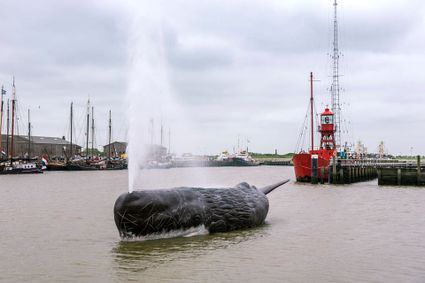 (198.0 km)Dokkum
(198.0 km)Dokkum
